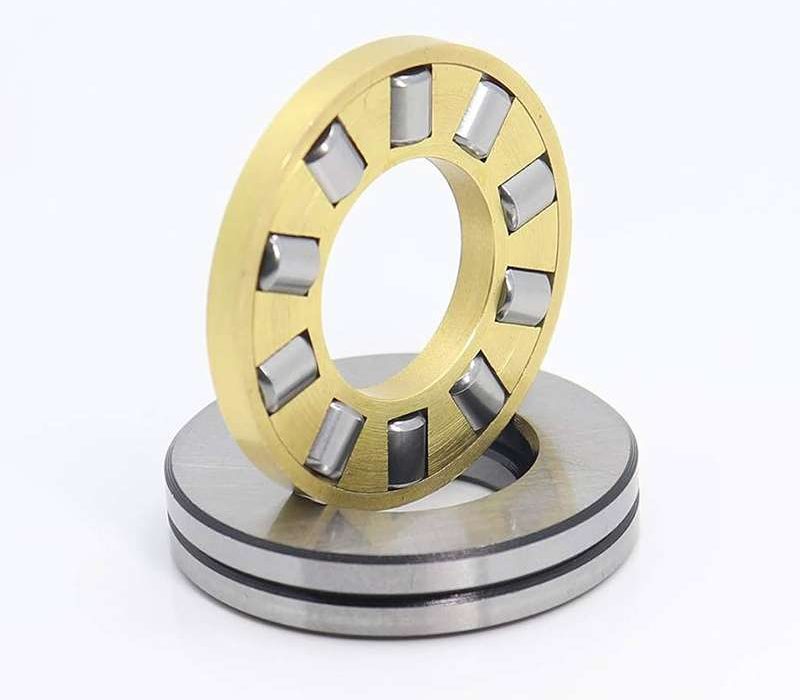Table of Contents
Categories
-
Adapter Sleeves (9)
-
Ball Bearings (11)
-
Ball Screw Bearings (2)
-
Ceramic Bearings (27)
-
Pillow Block Bearings (4)
-
Plain Bearings (32)
-
Roller Bearings (12)
-
Slewing Bearings (43)
-
Sliding Block (3)
-
Stainless Steel Bearings (27)
-
Super Precision Bearings (6)
-
Thin Section Bearings (9)
-
Track Rollers (4)
-
Universal Joints (1)
Beyond The Basics: Enhancing Machinery With Cylindrical Roller Thrust Bearings
Cylindrical roller thrust bearings are a type of rolling-element bearing that are used to support radial and thrust loads. They are typically used in applications where high loads and speeds are present, such as in engines, transmissions, and compressors.
In this blog post, we will discuss the basics of cylindrical roller thrust bearings, including their construction, types, and applications. We will also provide some tips on how to select the right cylindrical roller thrust bearing for your application.
Basics Of Cylindrical Roller Thrust Bearings
Construction Composition:
- Inner and outer rings: Axial cylindrical roller bearings contain an inner ring and an outer ring, which form an axial path between them and are responsible for carrying loads.
- Rolling elements (rollers): The rollers are the rolling elements of the bearing, which transmit the load by rolling motion.
- Cage: The cage supports and locates the rollers, ensuring that they are evenly distributed and maintain their relative positions.
- Seals: Used to prevent dust, impurities, etc. from entering the bearing and to increase service life.
How it works:
The working principle of thrust cylindrical roller bearings is based on their construction, where axial loads are efficiently transferred to the bearing support by the rolling motion of the rollers between the inner and outer rings. This rolling motion reduces friction and increases the efficiency and durability of the bearing, making it ideal for handling large axial loads. Its design optimizes the way loads are transferred, ensuring that the bearing reliably supports and transmits axial forces in a variety of industrial applications.
Types Of Cylindrical Roller Thrust Bearings
- Single direction cylindrical roller thrust bearings: can only withstand axial loads in one direction.
- Bidirectional cylindrical roller thrust bearings: can withstand axial loads in both directions.
- Combined cylindrical roller thrust bearings: combination of radial and axial load carrying capacity, suitable for multi-directional load.
- Non-separating cylindrical roller thrust bearings: inner and outer rings are integrated, not easy to separate.
- Separate type cylindrical roller thrust bearings: inner and outer rings can be separated, easy to install and maintain.
- Spherical Seat cylindrical roller thrust bearings: The use of spherical seating rings improves the self-adjustment ability of the bearings.



Applications Of Cylindrical Roller Thrust Bearings
Cylindrical roller thrust bearings are used in a wide variety of applications, including:
- Engines
- Transmissions
- Compressors
- Pumps
- Machine tools
- Mining equipment
- Material handling equipment
Tips For Selecting The Right Cylindrical Roller Thrust Bearings
When selecting a cylindrical roller thrust bearing for your application, there are a few factors you need to consider, including:
- The load rating of the bearing
- The speed of the bearing
- The operating environment
- The type of lubrication
The load rating of the bearing is the maximum load that the bearing can support without failing. The speed of the bearing is the maximum speed at which the bearing can operate without overheating. The operating environment is the conditions in which the bearing will be used, such as temperature, humidity, and dust. The type of lubrication is the type of lubricant that will be used on the bearing. By considering these factors, you can select the right cylindrical roller thrust bearing for your application.
Conclusion
Cylindrical roller thrust bearings are a versatile type of bearing that can be used in a wide variety of applications. They are capable of supporting high loads and speeds, and they can operate in harsh environments. By understanding the basics of cylindrical roller thrust bearings, you can select the right bearing for your application.
References
- 1. Other information about ”cylindrical roller thrust bearings“ from NSK ;
- 2.Something about “cylindrical roller thrust bearings” from SKF Bearings.




















